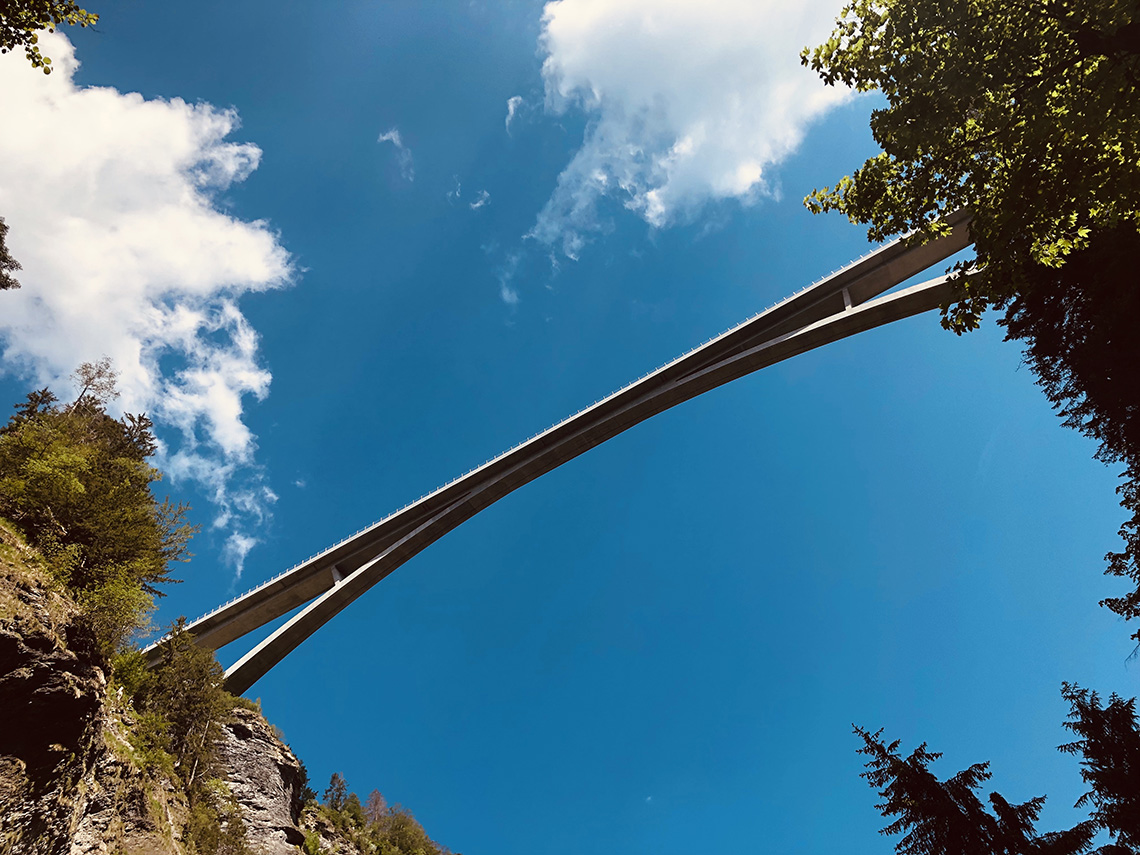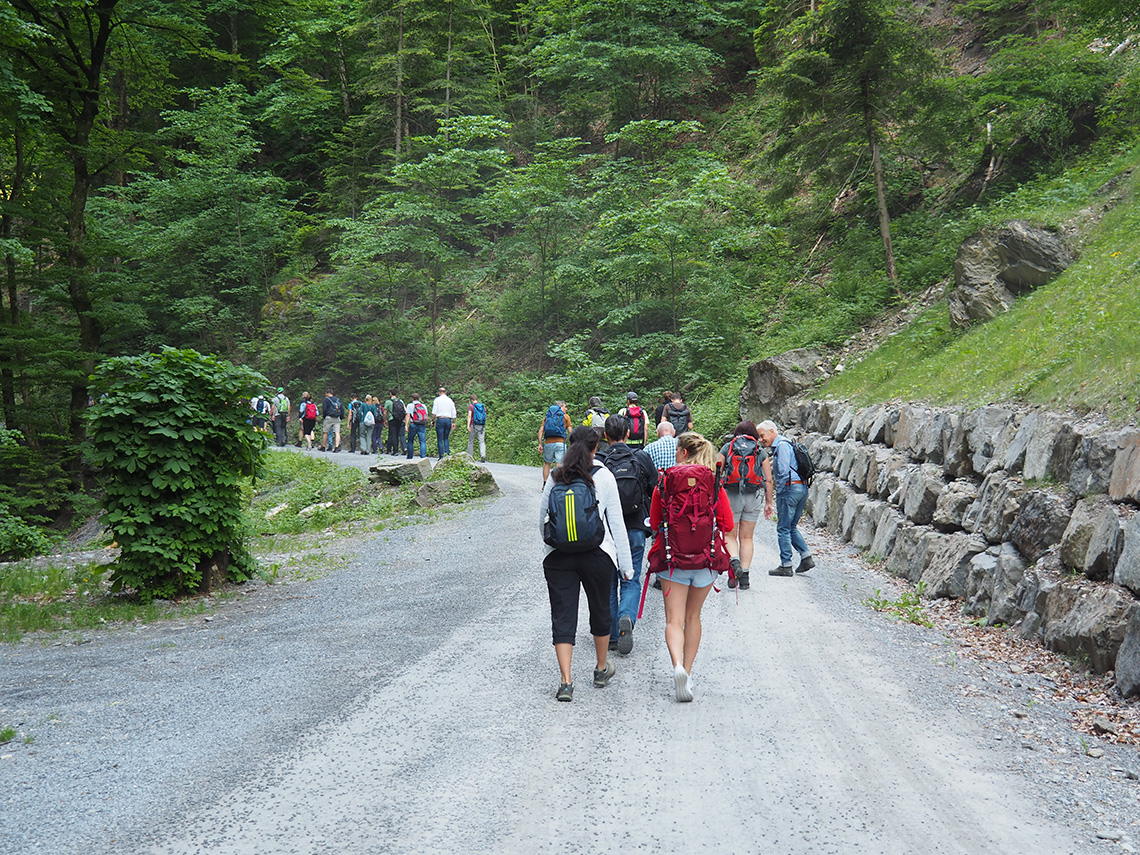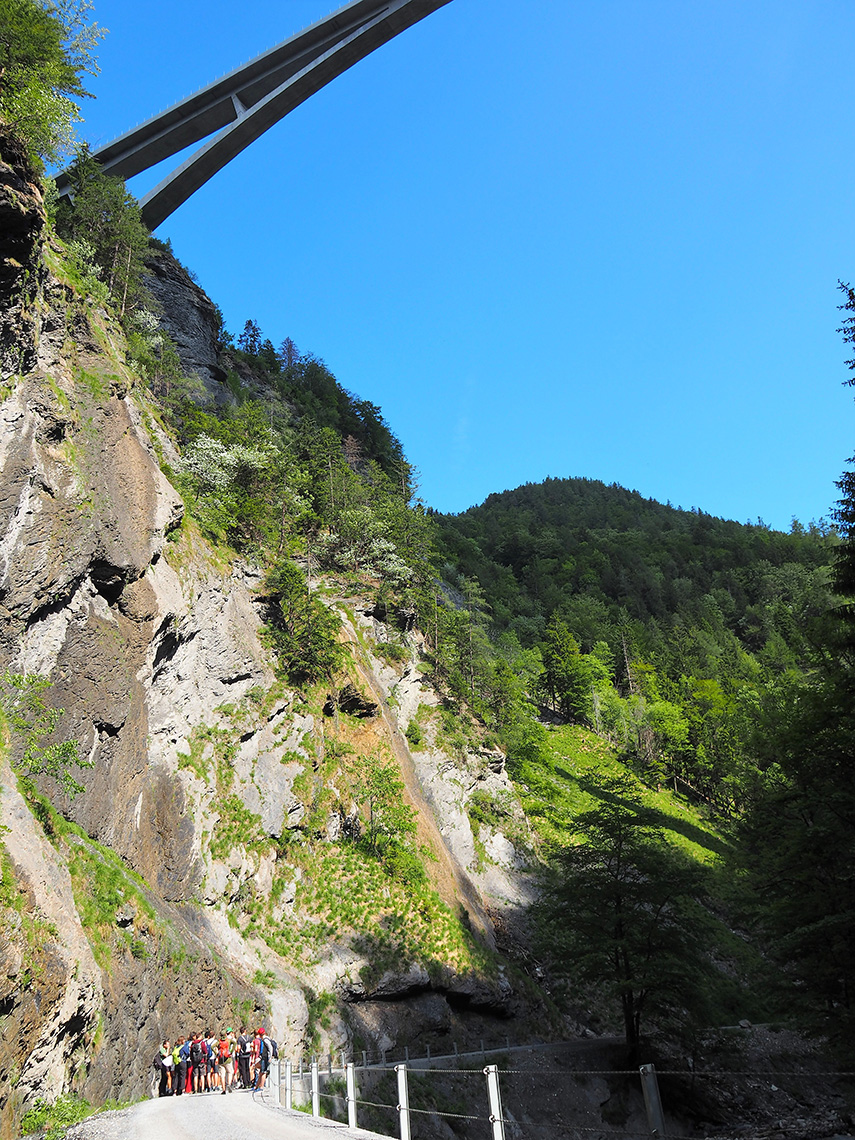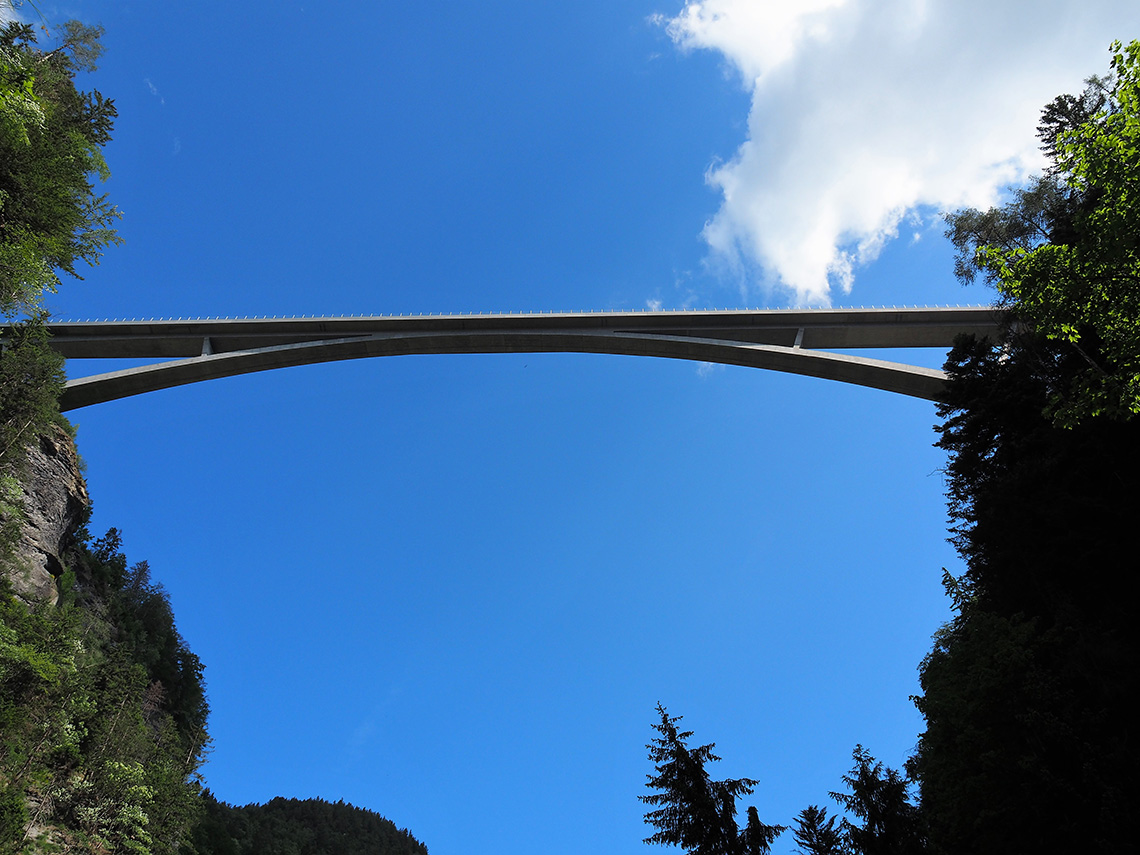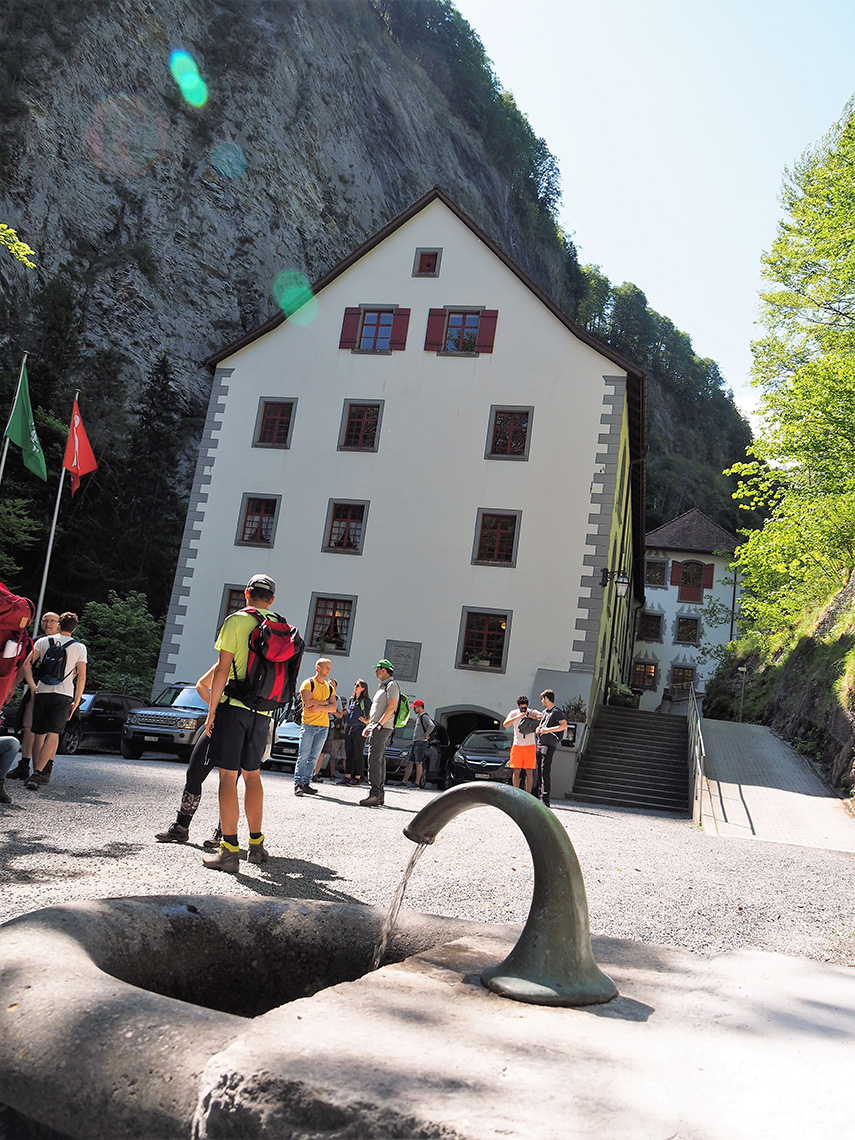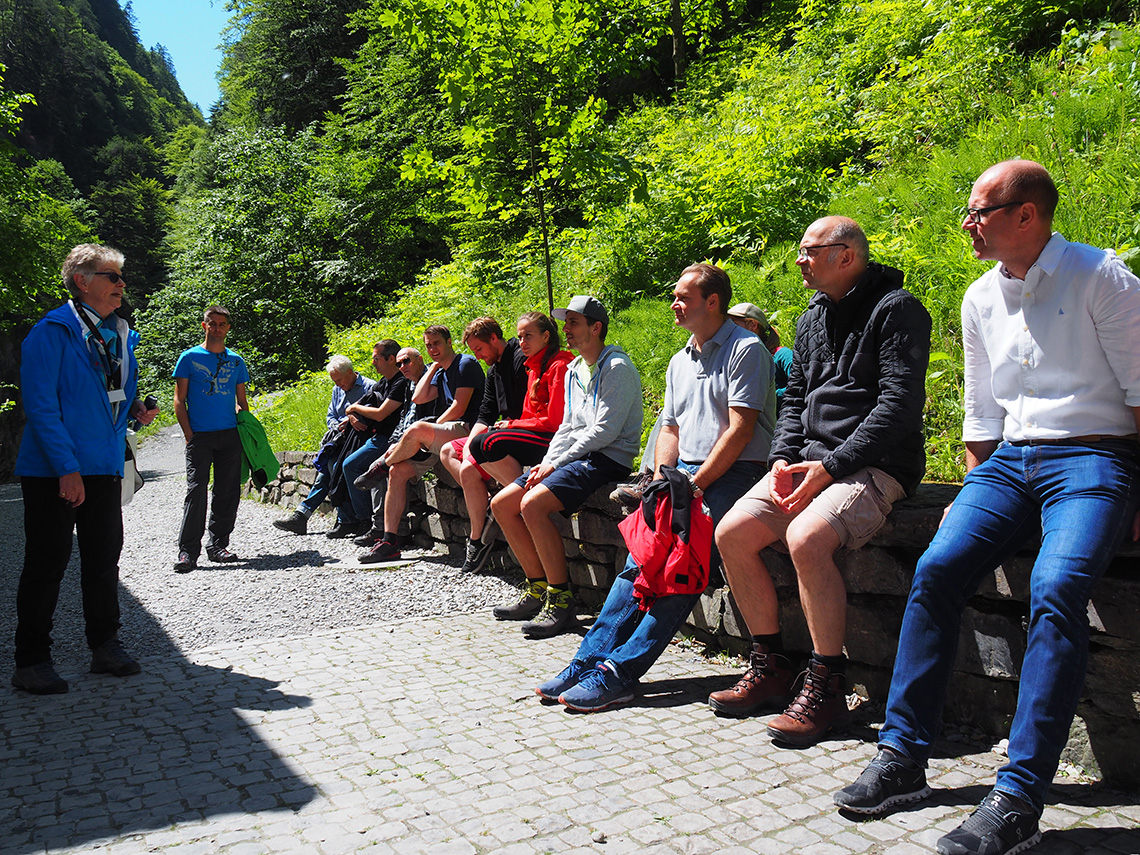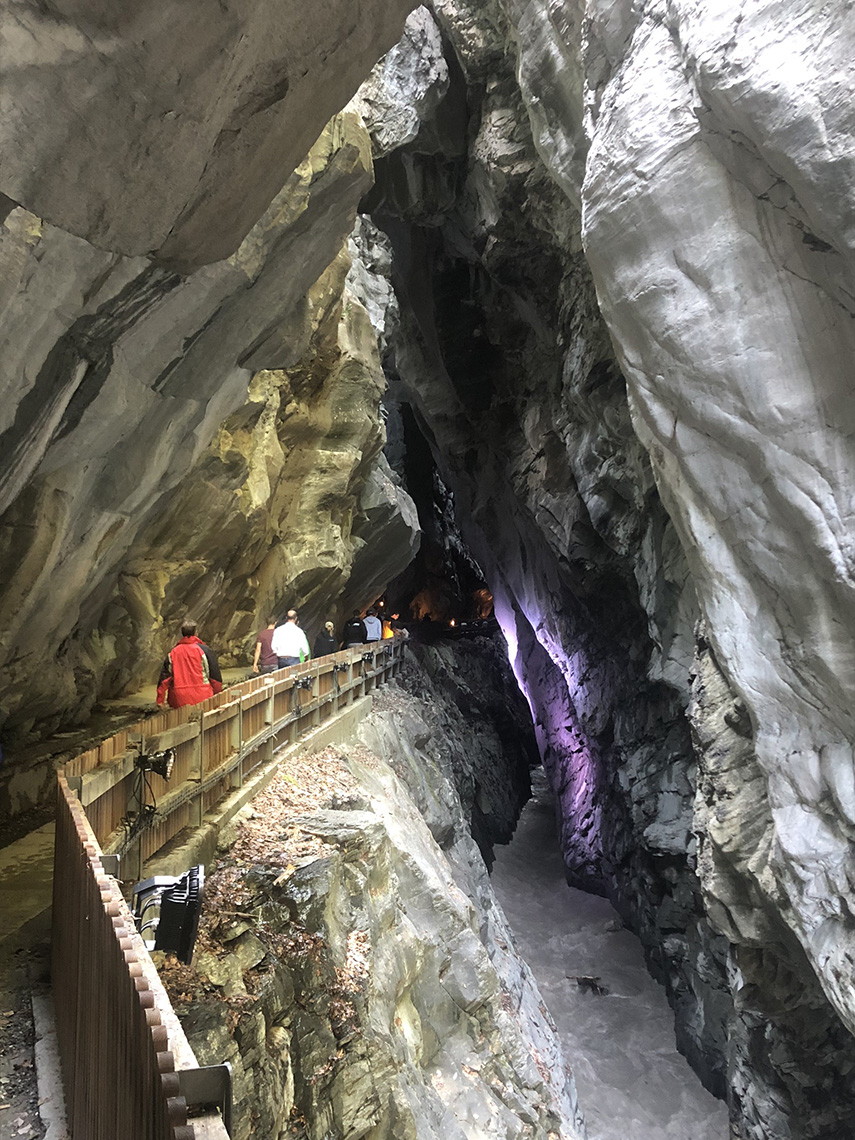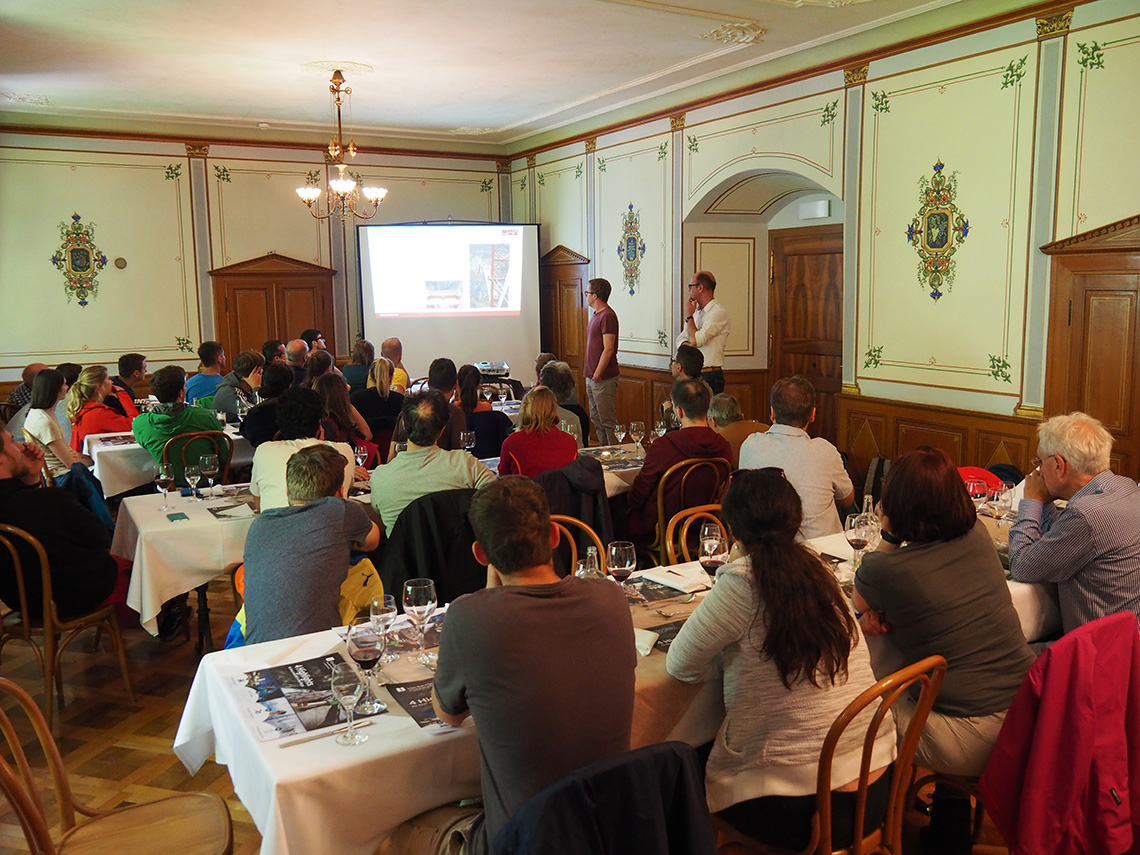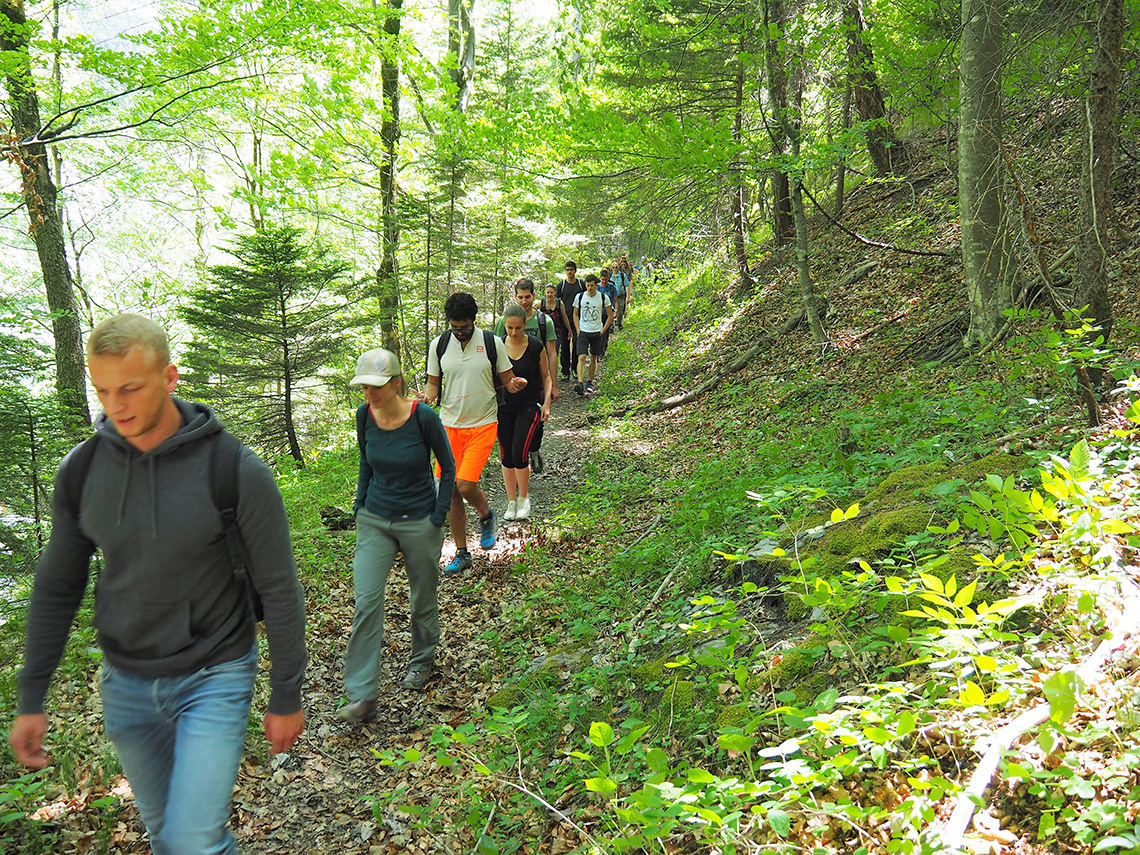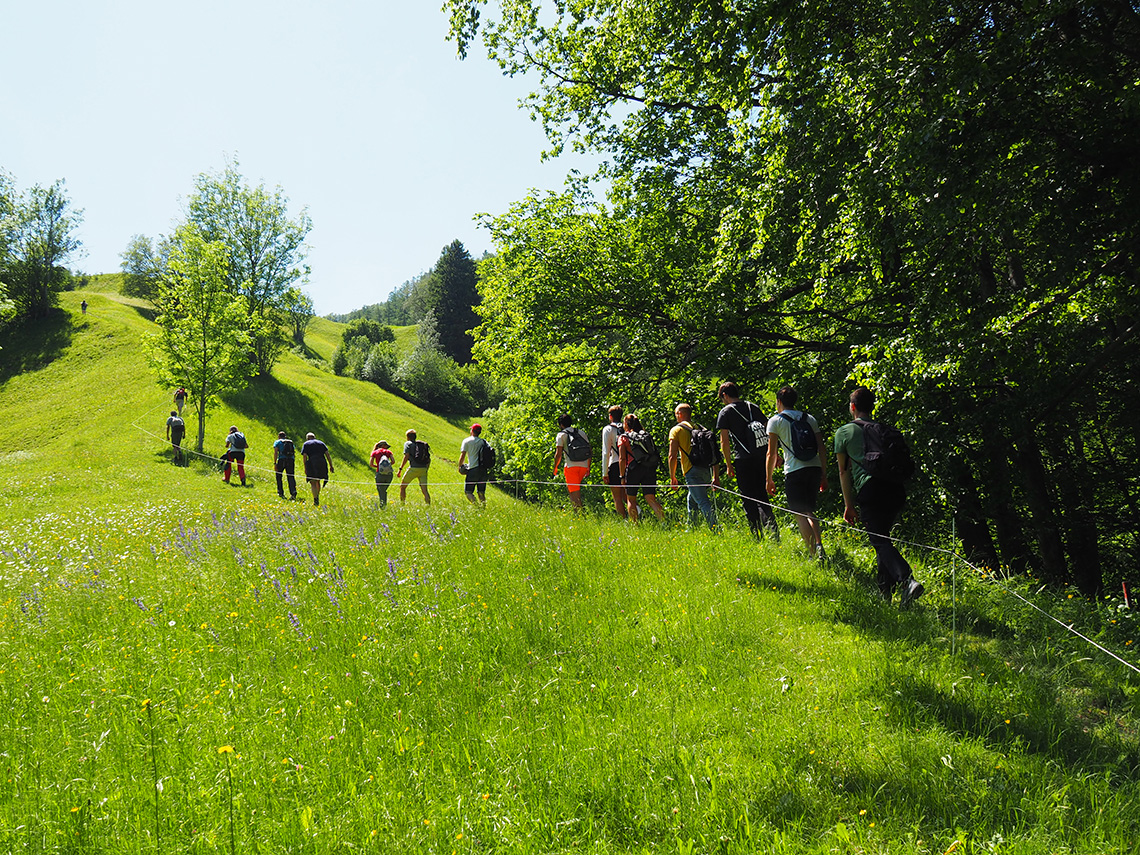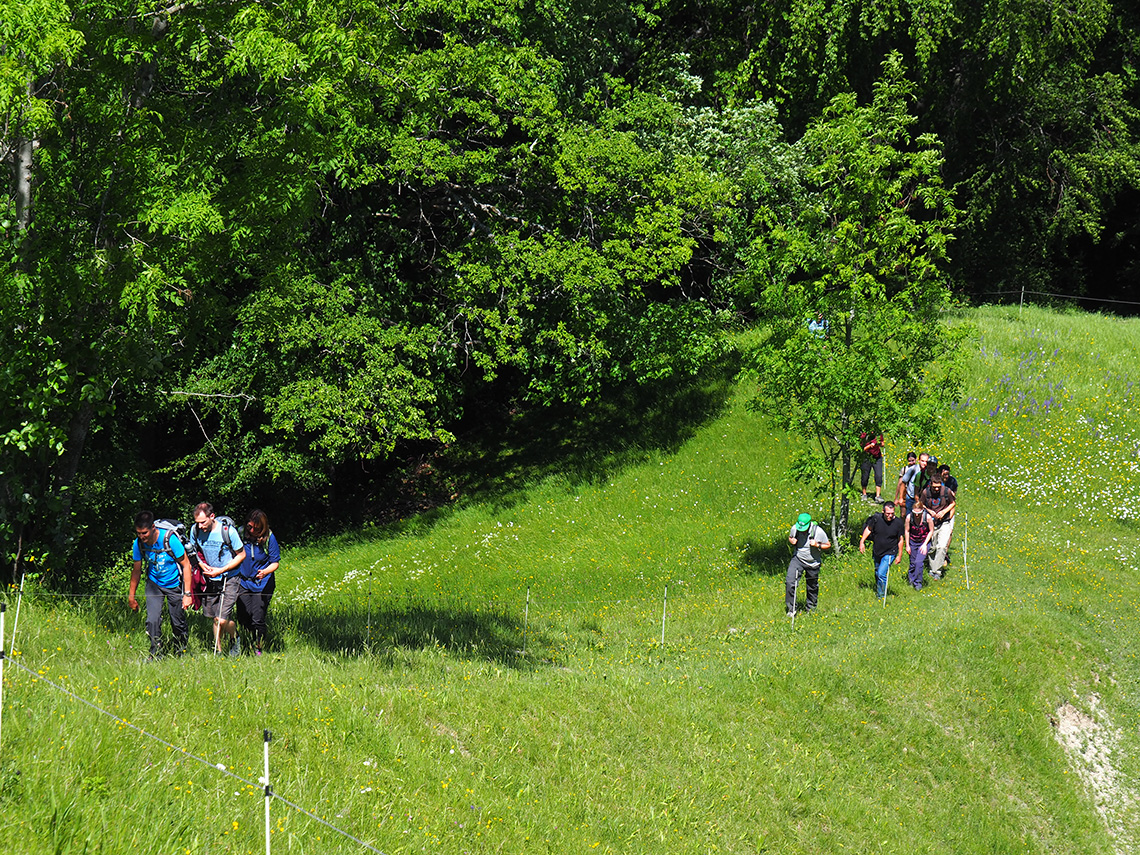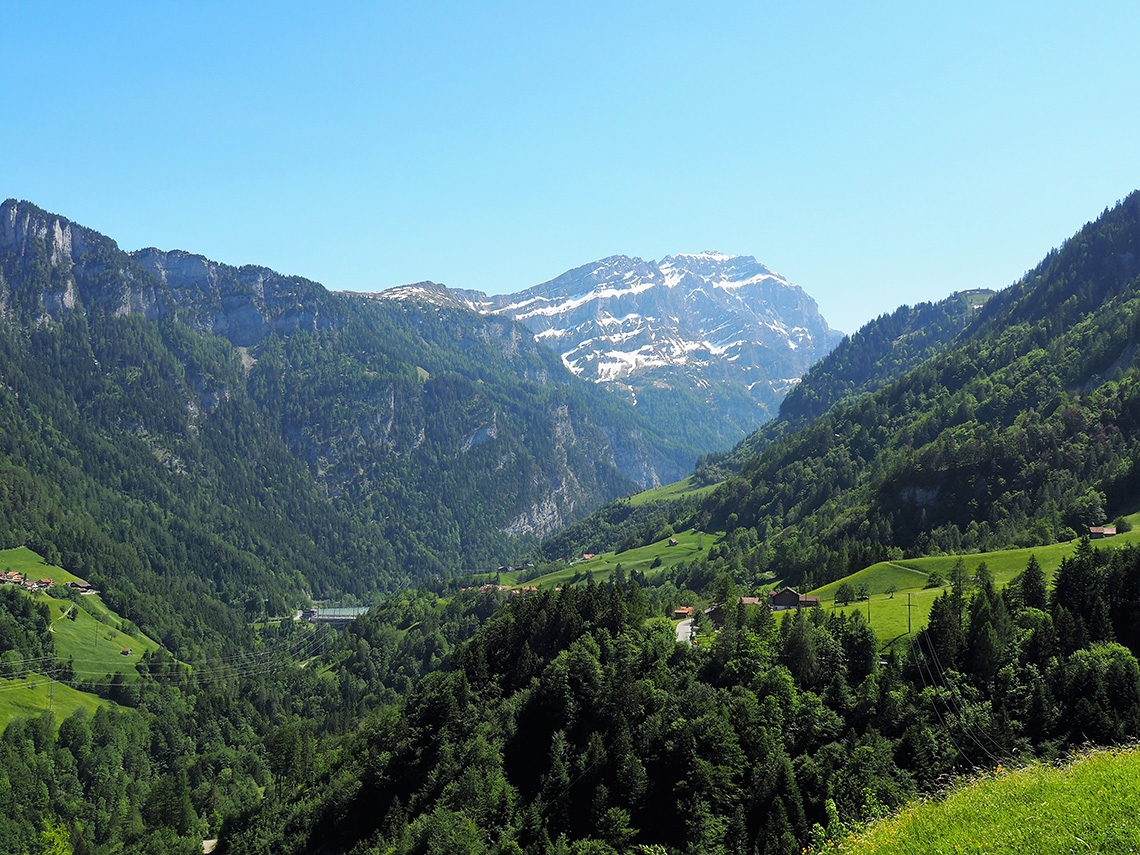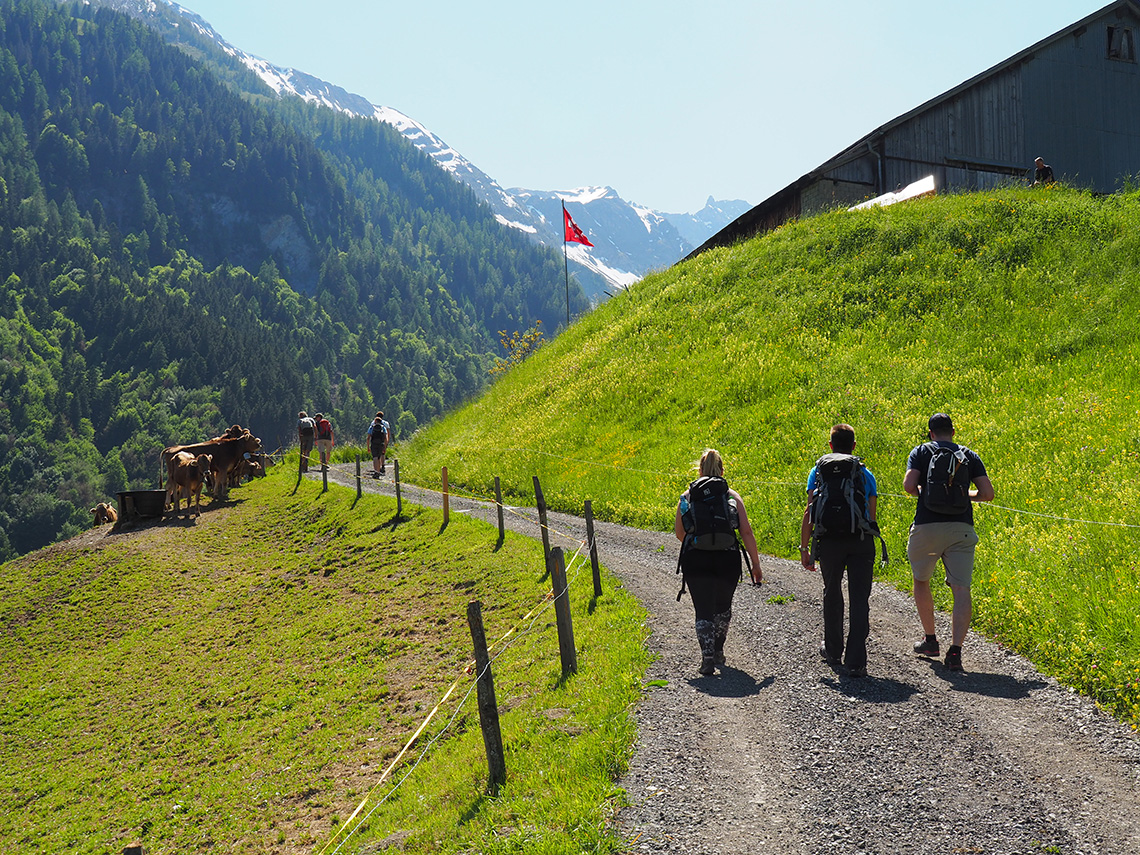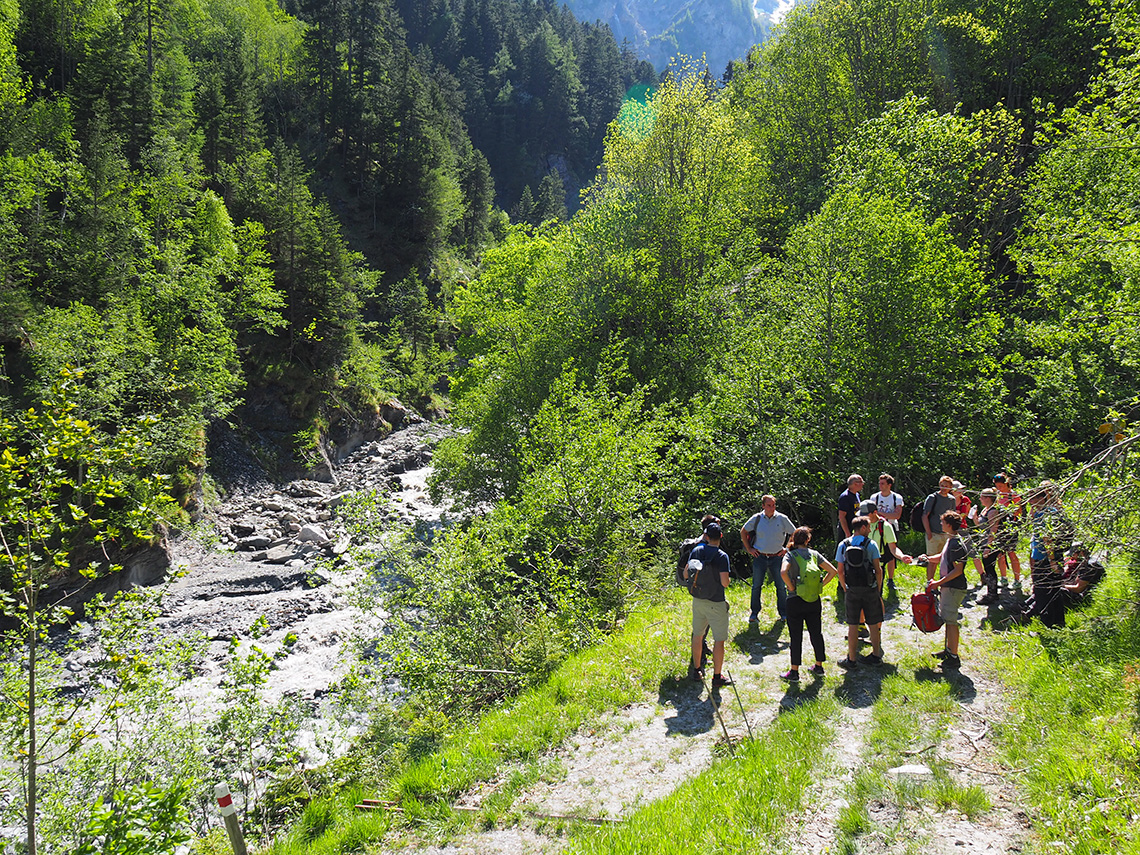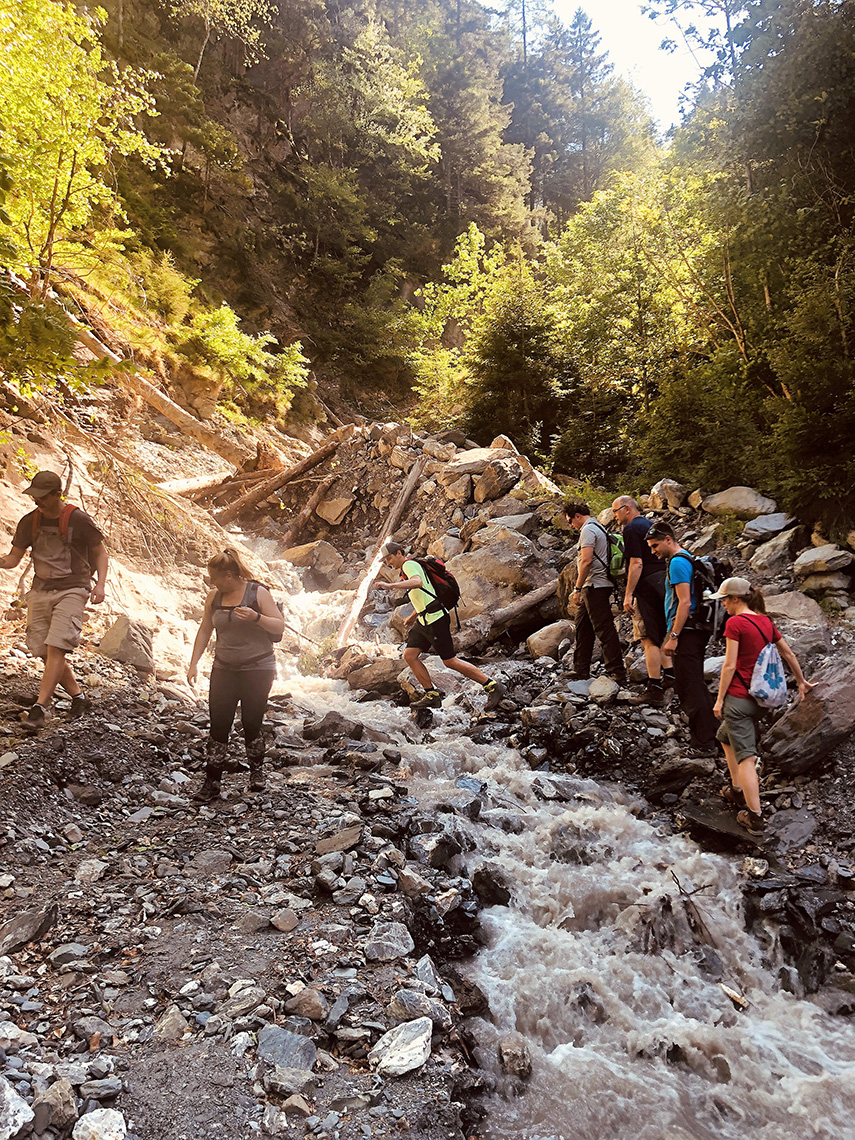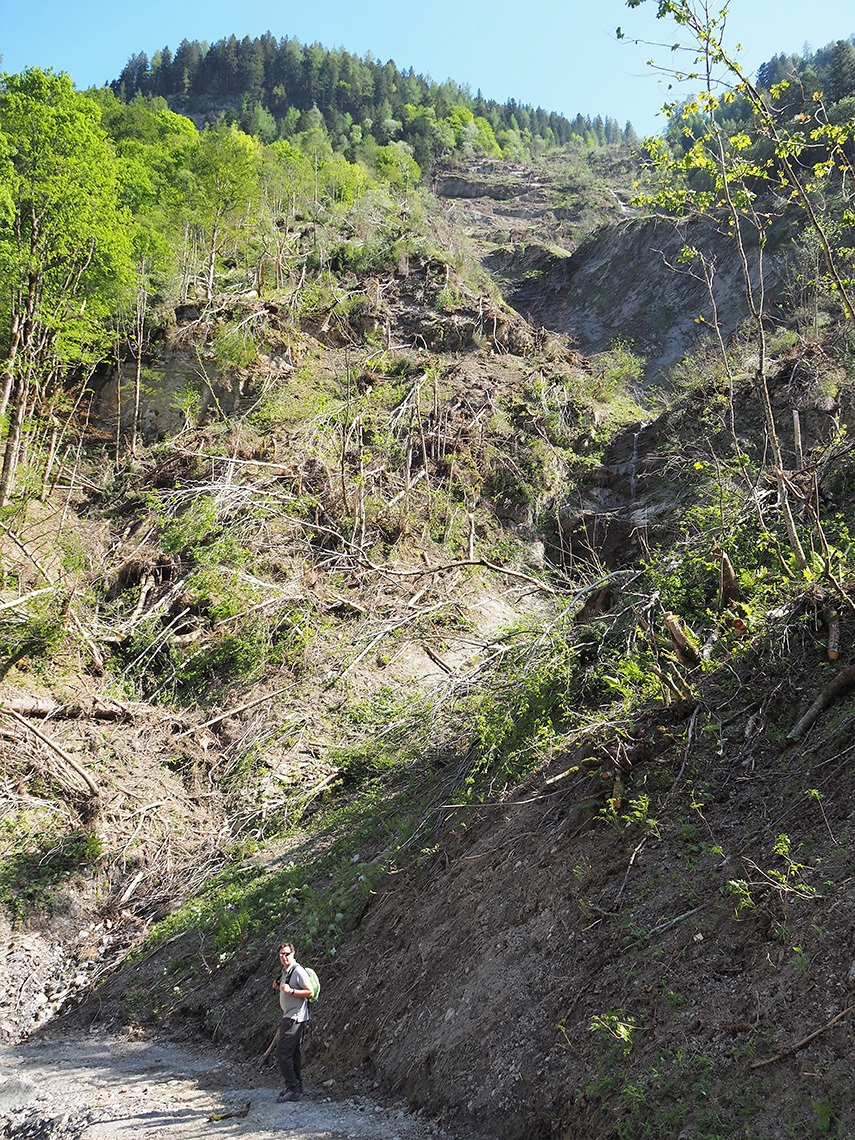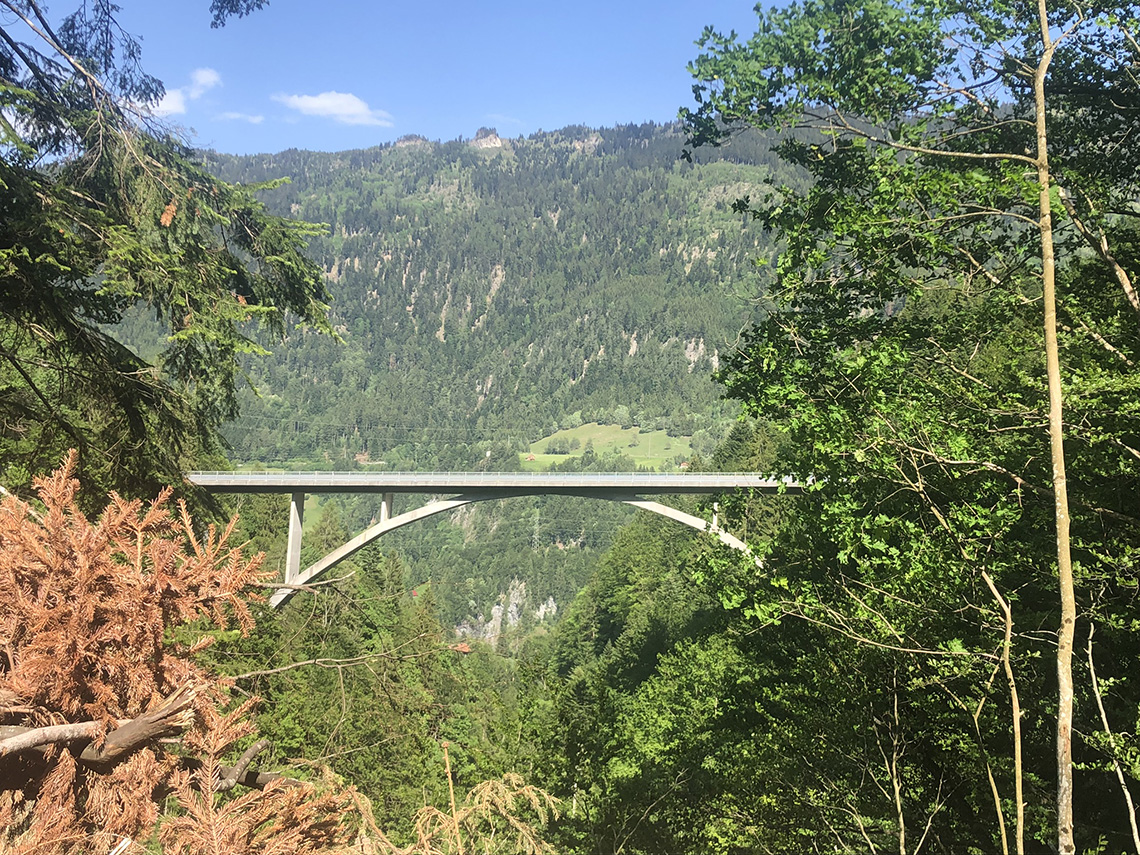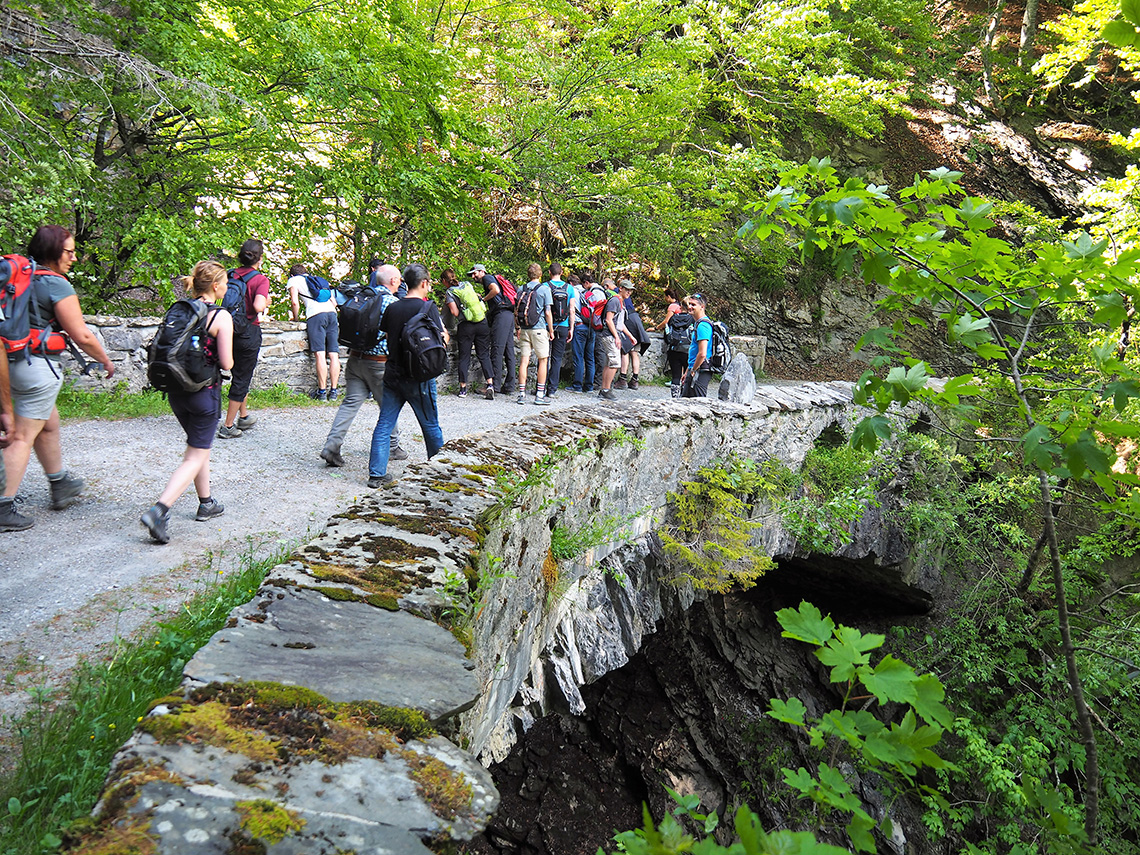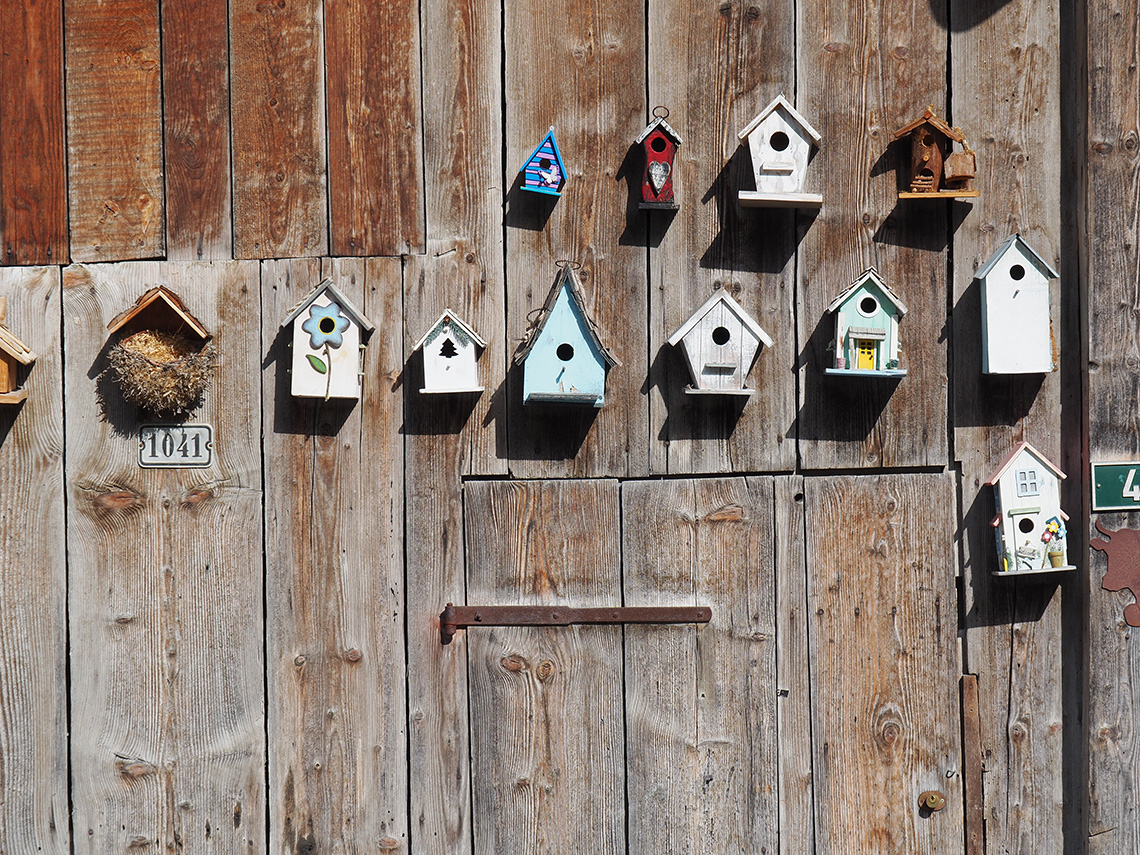
Bridges, thermal springs and mountains – hiking day 2019
Accompanied by summer holiday postcard weather and with the joy of winning the Building Award the evening before, we started our hiking day in a good mood on the morning of 7th of May. Our third office hiking day took us to the Tamina Valley, where we enjoyed wild and romantic nature experiences as well as the study of building and bathing culture. We started from Bad Ragaz on the Badtobelweg into the shady gorge, soon our first engineering station announced itself above our heads – the Tamina Bridge (LAP), completed in 2017. Experts from the engineering office Meichtry & Widmer shared with us their “insider knowledge” about the construction of the largest arched bridge in Switzerland. On behalf of the executing companies, they were significantly involved in the planning of the construction process and the building assistance measures. On site and during lunch, they explained the history, origin and structural design of the 417 m long bridge and gave us detailed insights into the construction of the bridge arch, which was built under cable-braced cantilever construction.
Within the walls of the Altes Bad Pfäfers and the mystical Tamina Gorge with its hidden thermal spring, we were invited on a very descriptive guided tour to a journey into the eventful history of the oldest baroque bath in Switzerland. Afterwards we had the pleasure of dining in the historic baroque hall, where Thomas Mann, Rainer Maria Rilke and Johanna Spyri once enjoyed their meal.
In the afternoon, strenuous, steep paths led us up to Valens, followed by a circular walk over Matten, through woodlands in a spring green and through the primeval Mülitobel. Wide views of the peaks of Calanda and Pizol were alternated with breathtaking views down to the Zanaibach.
Before returning to Valens, two bridge constructions could be studied. Similarities of the design of the 144 m long Tschenner Bridge from 1983 to the Tamina Bridge were obvious. The historic Mühlbach Bridge, which was built around 1900, spans the Mülitobel as a 7-meter-long stone bridge with a remarkably slim apex. The old roadway is bordered on both sides by mortar parapet walls made of quarry stone with half-moon openings.
After work the pleasure: The eventful day came to a successful conclusion in the restaurant Mühle Fläsch.
